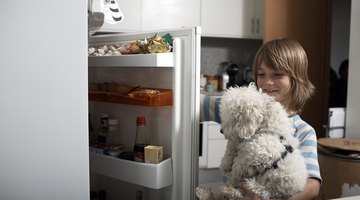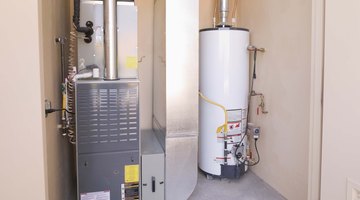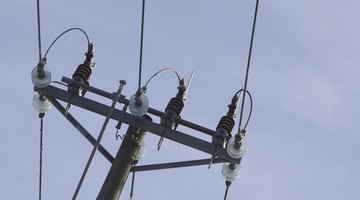What Size Generator Do I Need to Power My Home?
Depending on where you live, having a backup generator can make the difference between shivering through a winter power outage or staying warm and toasty while you wait for electricity crews to do their work.

Several considerations come into play when thinking about the size, or wattage, of generator that the typical person needs to have at home.
Starting Power vs. Running Power

Some appliances require more power to start running than is needed to keep running. According to Honda Power Equipment, a refrigerator requires 1,200 watts to start and 132 to 192 watts to keep running. Honda notes that these numbers are only for the Energy Star-rated version—non-rated refrigerators require more power than that. Numbers for 19 different household appliances are listed in a wattage guide, including subsections under appliances such as computers, televisions and microwave ovens.
Portable or Stationary?

The choice between portable or stationary comes down to what you need the generator for. If it is merely to run essential appliances—refrigerator, furnace, stove and lights—for a short amount of time, then a portable generator may be the best bet. These generators have outputs ranging from 1,000 watts (the Yamaha EF1000ISC) up to 17,500 watts (the Generac Guardian Ultra Source).
Stationary generators are usually hooked into natural gas or oil lines and wired directly into the electrical system of your home. These behemoths output well into several thousand kilowatts of power for almost infinite amounts of time. The Carrier brand 35-45kW Air-Cooled Home Standby Generator, for example, outputs a running wattage of 26kW to power a 5,000-square-foot home. Generators this size are best used for either long periods of time or for large power needs.
What Are You Powering?

Honda Power Equipment makes much of a concept it calls “Power Management,” which relies on three considerations—importance, running time and number—to effectively use small generators.
In Honda Power Equipment’s example, a refrigerator (1,600 starting watts/200 running watts), plus a furnace with a ¼ horsepower fan (1,600 starting watts/600 running watts), plus a television (300 watts flat), a microwave (1,500 watts flat) and five lights (60-watt bulbs = 300 watts) equals to 5,300 watts.
It applies “Power Management” to show that if you start up the refrigerator and furnace at different times, you save one start-up cost of 1,600 watts; and running the microwave only intermittently saves you an occasional 1,500 watts. Thus, your constant power usage is a mere 1,400 watts (television, lights, refrigerator and furnace) and your occasional use is 1,600 watts (intermittent microwave use switched with starting costs of refrigerator and furnace). This means that a 3,000-watt generator would fulfill your power needs, also presenting you with a significant cost savings.
What you’re interested in, then, is not the highest total wattage, but rather the wattage that you plan to use on a continuous basis. That number, and whether you want to worry about turning appliances off and on, will determine what size of generator you choose.
The Drip Cap
- Depending on where you live, having a backup generator can make the difference between shivering through a winter power outage or staying warm and toasty while you wait for electricity crews to do their work.
- Honda notes that these numbers are only for the Energy Star-rated version—non-rated refrigerators require more power than that.
- Generators this size are best used for either long periods of time or for large power needs.
- In Honda Power Equipment’s example, a refrigerator (1,600 starting watts/200 running watts), plus a furnace with a ¼ horsepower fan (1,600 starting watts/600 running watts), plus a television (300 watts flat), a microwave (1,500 watts flat) and five lights (60-watt bulbs = 300 watts) equals to 5,300 watts.
- That number, and whether you want to worry about turning appliances off and on, will determine what size of generator you choose.
Writer Bio
Matthew Delman is a writer and professional editor based in Eastern Massachusetts, with interests in a variety of topics -- most notably health, education, biotechnology, pharmaceuticals, technology, and video games. He is currently working on getting a fantasy novel ready to submit for representation.
Photo Credits
- David Sacks/Lifesize/Getty Images
- David Sacks/Lifesize/Getty Images
- Photo and Co/Lifesize/Getty Images
- Jupiterimages/Comstock/Getty Images
- Hemera Technologies/AbleStock.com/Getty Images
More Articles



